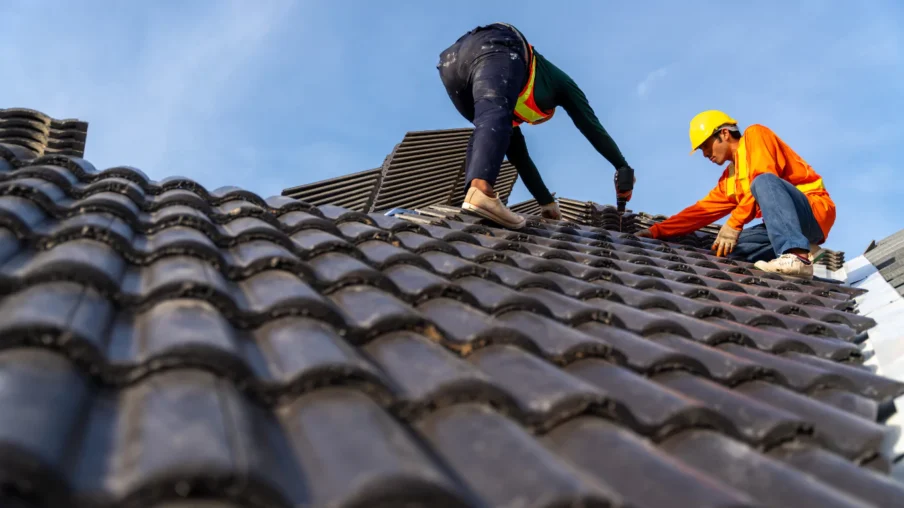Introduction
Your roof is more than just a protective barrier—it’s a crucial component of your home’s energy efficiency and overall value. In 2025, advancements in roofing materials and technology offer homeowners more options than ever. This guide will help you navigate these choices to find the best roofing system for your needs.
Understanding Residential Roofing Systems
Components of a Roofing System
A comprehensive roofing system includes:
- Decking: The wooden base that supports the roof.
- Underlayment: A water-resistant barrier placed over the decking.
- Shingles/Tiles: The outermost layer that provides protection and aesthetic appeal.
- Flashing: Metal pieces that seal joints and edges to prevent leaks.
- Ventilation: Systems that allow air circulation to regulate temperature and moisture.
- Lifespan Expectations
Different roofing materials have varying lifespans:
- Asphalt Shingles: 15–25 years
- Metal Roofing: 25–40 years
- Slate, Clay Tile, Synthetic Options: 50+ years
- Consider both the initial investment and the expected lifespan to determine long-term value.Key Factors to Consider
Climate and Environmental Conditions
Portland’s weather patterns, including rain and occasional snow, necessitate materials that can withstand moisture and temperature fluctuations.
Budget
While upfront costs are important, consider long-term maintenance and energy savings.
Aesthetic Preferences
Choose materials and colors that complement your home’s architectural style and neighborhood guidelines.
Energy Efficiency
Look for materials with high solar reflectance and insulation properties to reduce energy bills.
Comparing Roofing Materials
| Material | Pros | Cons | Ideal For |
|---|---|---|---|
| Asphalt Shingles | Affordable, easy to install | Shorter lifespan | Budget-conscious homeowners |
| Metal Roofing | Durable, energy-efficient | Higher upfront cost | Modern, eco-friendly homes |
| Clay/Concrete Tiles | Fire-resistant, stylish | Heavy, expensive | Spanish or Mediterranean-style homes |
| Slate | Long-lasting, elegant appearance | Very heavy, costly | Historic or luxury homes |
| Wood Shakes | Natural look | High maintenance, fire risk | Rustic or cottage-style homes |
| Synthetic Materials | Lightweight, low maintenance | Variable quality | Versatile modern solutions |
2025 Roofing Trends
Solar-Integrated Roofing
Combine energy generation with protection using systems like Tesla Solar Roof or GAF Timberline Solar™.
Cool Roof Technology
Reflective coatings and materials that reduce heat absorption, lowering cooling costs.
Eco-Friendly Materials
Options made from recycled materials, such as rubber or plastic, offer sustainability without compromising durability.
Smart Roof Monitoring
Advanced sensors that detect leaks, temperature changes, and structural issues in real-time.
Maintenance Tips
- Regular Inspections: Check for damage, moss, or missing components every season.
- Gutter Cleaning: Prevent blockages that can lead to water damage.
- Professional Assessments: Schedule inspections every 1–2 years, especially after severe weather.
- Monitor for Warning Signs: Be alert for sagging, mold, interior leaks, or excessive granule loss.
Conclusion
Selecting the right residential roofing system in 2025 involves balancing aesthetics, functionality, and sustainability. By understanding your options and staying informed about the latest trends, you can make a choice that enhances your home’s value and performance.
For personalized advice and a free consultation, contact Certified Roofing Services today.




